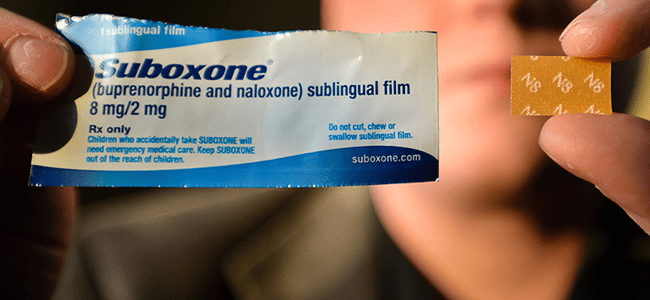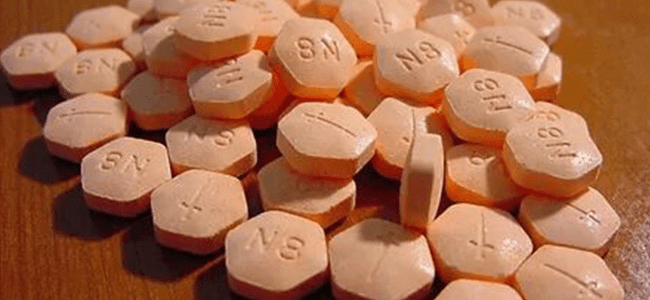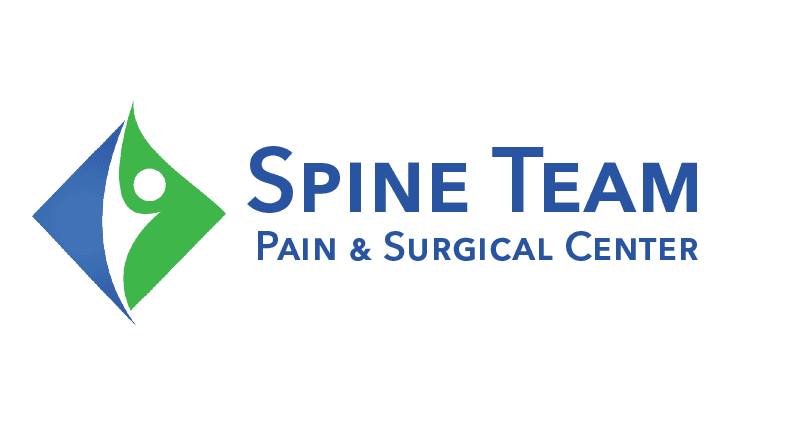The Significance of Opioid Addiction Treatment with Suboxone

Suboxone is a prescription medication that's commonly used for opioid withdrawal, as well as opioid use disorder treatment. It's one of the medicines utilized in medication-assisted treatment (MAT). For decades now, this treatment approach has applied prescription medications to assist in weaning clients off of various addictive substances, including opioids and alcohol. Studies have proven that Suboxone MAT lowers mortality rates, enhances relapse rates, and decreases incarceration. Opioids are painkillers that are extremely addicting and may often lead to lethal overdoses. Although not life-threatening, opioid withdrawal can be very uncomfortable. For this reason, medications are required to relieve these withdrawal symptoms.
Apart from reducing opioid cravings, Suboxone also assists in suppressing withdrawal symptoms. Suboxone is applied in medical settings to assist you or your dear one stop taking opioids, complete treatment and stay in recovery. It plays a huge role in assisting to curb the present opioid epidemic. That said, since Suboxone consists of an opioid-like ingredient, it's usually abused, leading to Suboxone addiction.
If you're wondering about this prescription drug for yourself or a family member having difficulties with opioid addiction, you're in the right place. This article should help you understand how opioid addiction is treated with Suboxone and what to expect as part of the treatment process.
Read on.
What is Suboxone?
It's a prescription drug that consists of two primary substances: buprenorphine and naloxone. Buprenorphine is a drug that consists of partial opioid effects. On the other hand, naloxone inhibits opioid receptors and may reverse the impacts of opioids. When it's administered orally, buprenorphine is Suboxone's only active ingredient. Naloxone can only be effective when used intravenously, and that's why it was incorporated into buprenorphine to prevent the improper intravenous application of Suboxone.
In general, Suboxone treatment offers numerous advantages for patients needing opioid addiction recovery. Medical professionals typically administer the drug as a thin film. It involves placing Suboxone beneath the patient's tongue until it dissolves. When patients start the medical detoxification procedure and go into withdrawal, the drug could be used to lower typical withdrawal symptoms and cravings for opioids.
Like most treatments, Suboxone treatment comes with its risks and benefits. Because it's a mood-altering medication, Suboxone can be abused. Dependence and tolerance will result with its constant application, which means that there's withdrawal with sudden discontinuation of the medication.
Nonetheless, when applied as prescribed and under medical supervision, Suboxone has demonstrated positive impacts. By alleviating withdrawal symptoms and uncomfortable cravings for opioids, the drug has been proven to decrease illicit opioid use, decrease overdose deaths, and assist people in staying engaged in the recovery procedure.
They're a family of narcotic drugs obtained from or associated with the opium poppy plant. They work as sedatives by depressing activity in your central nervous system (CNS) and relieving pain.
Long-term opiate application may lead to enhanced tolerance to the drug. In such a scenario, the user would require to increase the dosage to obtain the same effect. It can result in dependence, which means that there are certain withdrawal symptoms once the drug is stopped. It might also result in a behavioral pattern whereby the drug continues to be utilized regardless of negative consequences. And this is what is referred to as an addiction. Sometimes, this might result in accidental overdose and possibly death.
Below is a list of the most popularly abused opiates:
· Heroin
· Morphine
· Fentanyl
· Vicodin (hydrocodone)
· Oxycodone
· Oxycontin
· Methadone
· Codeine
Suboxone Treatment For Opioid Addiction
Is Suboxone a good treatment for opiate addiction? Is Suboxone a medically accepted treatment for opiate addiction? Keep reading for more about opioid addiction treatment with Suboxone.
This oral prescription drug was approved by the FDA in 2002 to treat opioid addiction primarily. Commonly prescribed as a film or sublingual tablet, it consists of two active drugs: Buprenorphine and Naloxone.
The combined application controls some of the defects of the individual drugs. Buprenorphine primarily eases withdrawal symptoms, as well as opiate cravings without allowing full opiate effects.
On the contrary, Naloxone functions in the background as a deterrent and only takes effect when Suboxone is injected into the body. Once this occurs, naloxone may induce withdrawal symptoms such as headache, nausea, restlessness, sweating, trembling, and vomiting.
Suboxone Opioid Maintenance Therapy

For some patients addicted to opioids, the short-term application of Suboxone isn't enough to avoid relapse while working toward their recovery. The primary objective of opioid addiction treatment is to assist patients in ending their application of all opioid drugs. That said, people with an increased risk of relapsing and overdosing might gain from long-term Suboxone maintenance therapy.
When it comes to addiction treatment professionals, there's near-unanimous agreement that prolonged Suboxone application is a safer substitute to heroin addiction. While replacing one drug with a different one is never the right solution, undoubtedly, for some opioid addicts, the long-term application of Suboxone is an effective method of avoiding relapse, overdose, and even death.
Suboxone can ultimately be a powerful tool for any opioid addict who needs a helping hand. With that said, it is critical not to forget the fact Suboxone's most important advantage is its overall ability to assist addicts in becoming more receptive when it comes to comprehensive addiction treatment.
People having addiction difficulties should acknowledge that they can't blame their substance abuse behavior solely on the drug itself. If an addict wants to achieve lasting recovery, they have to address the underlying psychological problems that led them to their opioid drugs abuse in the first place.
Effectiveness
Generally, Suboxone has been proven to be much effective since it decreases the cravings linked to the long-term opiate application while offering deterrence to present use.
This prescription drug seems to work much better when taken for a prolonged period. A certain study demonstrated that opiate-dependent youth who took the drug for 12 weeks had more chances to remain abstinent in comparison to participants who had only taken a two-week detox treatment.
How Is Suboxone Prescribed?
It's prescribed as part of an organized drug detoxification program, as well as for maintenance therapy whenever required. You can find it as a generic and is offered in different formulations, including:
· 2 mg buprenorphine with 0.5 mg naloxone
· 4 mg buprenorphine with 1 mg naloxone
· 8 mg buprenorphine with 2 mg naloxone
· 12 mg buprenorphine with 3 mg naloxone
How It's Administered
It's only a doctor who can write Suboxone scripts. Ensure that you follow your health specialist's specific directions during every dose. Typically, medication may be administered through a tablet form or the Suboxone Film.
And if you're taking the Suboxone Film, you'll have to put it beneath your tongue to deliver the appropriate medicine amount. While that film is dissolving, you ought to remember the following:
Don't talk with the film in your mouth. It might also influence how that medicine is absorbed in the body.
Avoid chewing or swallowing the film. It can make the medicine not function as well.
As time progresses, your doctor might change the dose to assist you in weaning off medications altogether.
What Are the Treatment Plans?
Approaches may differ based on treatment centers, but there are four primary steps to any Suboxone treatment plan. These include:
· Intake. It involves a psychosocial and medical evaluation, blood tests, and a urine drug screen to ensure that you may use the drug with no harm.
· Induction. This is to transition you from your current use of opiates to Suboxone to reduce "cold turkey" withdrawal symptoms.
· Stabilization. This involves adjusting Suboxone to the lowest dose to suppress withdrawal symptoms to enable eventual tapering off and treatment discontinuation.
· Maintenance. It's for people with serious addiction who might require constant, medically supervised treatment and support (such as attendance at a non-step support group or Narcotics Anonymous).
Side Effects Of Suboxone
Some of the expected effects of Suboxone are:
· Minimized cravings for other opiates.
· Decreased sensations of physical pain.
· Feelings of calm and overall well-being.
· Feelings of euphoria.
Due to the last effect, those that are on painkiller medications or Heroin might use Suboxone illicitly to cope with the unwanted results that take place when an opiate isn't available. Nonetheless, if Suboxone is used while an opioid drug is in the body, it can cause opiate withdrawal symptoms.
Suboxone's side effects rely on the dosage and if the drug is taken in combination with other substances. These side effects might include:
· Difficulty sleeping.
· nausea.
· Attention problems.
· Constipation.
· Blurred vision.
· Insomnia.
· Sweating.
· Hypotension (lowered blood pressure).
· Respiratory depression.
· Dizziness and fainting.
What's more, first dissolving and later injecting Suboxone may lead to severe vascular inflammation and infections along with hastening a few other adverse impacts of excessive opiate application.
The most adverse side effect of Suboxone is the possibility of abuse and addiction, and this can, in time, result in adverse health effects and overdose.
About Suboxone Overdose
As aforementioned, Suboxone consists of buprenorphine - and it's extremely challenging to overdose on this drug, but it's possible. The overdose risk is enhanced when it's combined with other drugs, including benzodiazepines and alcohol, to deliver a more intense high. It can lead to serious and widespread depression of a wide range of physiological processes–such as reduced heart rate and breathing, coma, and possibly death.
Consider seeking immediate medical treatment in case you encounter the following symptoms:
· Intermittent loss of consciousness.
· Profound drowsiness.
· Lack of coordination.
· Vision problems.
· Slurred speech.
· Sluggish reflexes.
· Slowed breathing.
Suboxone Interactions
Certain medications, supplements, or herbal remedies may cause negative impacts when consumed with Suboxone.
The following is a condensed list of several products that might cause complications if taken with Suboxone. Take note of every current medication you have and talk to your health specialist about any drugs you need to refrain from using while on Suboxone.
· Cholesterol-lowering medications
· Acetaminophen
· HIV-treatment drugs
· Niacin
· Fluoxetine
· Verapamil
· Oral contraceptives
Is Suboxone Addictive?
A common problem with using Suboxone to treat opioid addiction is that the patient might still crave opioids and might never be able to stop using Suboxone. Suboxone use disorder isn't as severe as opioid addiction, but this may again cause issues in different aspects of your life, such as your personal and professional life. The prescription drug can be abused by consuming too much at a go or by changing the medication in a way that makes naloxone ineffective. You can buy Suboxone on the street for an increased value which has become a common drug of abuse. Suboxone has many street names such as boxes, stops, stop signs, and sobos.
Suboxone Addiction Treatment
As you've learned, you can get addicted to Suboxone treatment. Similar to opioid addiction, Suboxone addicts are often encouraged to consider professional treatment. No matter if it's outpatient treatment or residential treatment, the addict will initially have to go through detoxification. Because the withdrawal procedure may be intense, medically supervised detoxification is the prudent thing to do. Opioids could be issued to calm the withdrawal side effects linked to Suboxone withdrawal. Your treatment team will consider whether it's best to take Suboxone as your long-term treatment once detoxification is complete or to replace it with another medication. Naltrexone and Methadone are suitable alternatives for Suboxone to curb withdrawal symptoms, as well as future cravings.
Additionally, psychotherapy is encouraged to assist in revealing the underlying triggers that made the person abuse opioids or Suboxone. No matter if it's past trauma, extreme stress, unhealthy coping mechanisms, or undiagnosed mental health disorder, therapists will work closely with all patients to approach these complications healthily and therapeutically. Cognitive-behavioral therapy (CBT), dialectical behavior therapy (DBP), and interpersonal therapy are three forms of behavioral therapy that could be used to aid in treating Suboxone abuse and the accompanying underlying causes.
The Significance of Opioid Addiction Treatment with Suboxone
Are you wondering how you can find Suboxone treatment for your opioid addiction? Apart from Suboxone treatment, Spokane Spine Team offers a wide range of evidence-based treatment methods. The program starts with a full assessment, and this lays the foundation for a personalized recovery plan. Customers will get access to a range of treatments for lasting recovery.
Suboxone treatment could be one way of safely starting the journey away from your opioid addiction. At Spokane Spine Team, you'll access all the necessary resources to combat your addiction. Call 509 363 1104 and start living a sober life.

